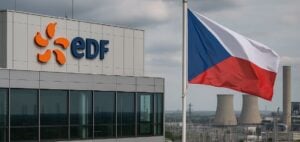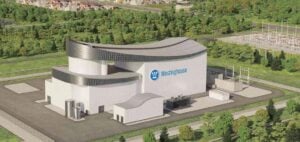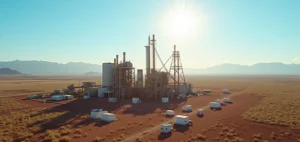Under a cooperation agreement signed in October 2022, Westinghouse and Ansaldo Nucleare have committed to develop LFR (Lead Fast Reactor) technology.
The agreement will allow the two companies to pool their design, testing and licensing expertise, while aligning their respective partner and supply chain organizations. The agreement strengthens development activities already underway in the UK, US, Italy and Romania, where more than ten state-of-the-art lead-based testing facilities are being installed.
Ansaldo Nucleare: Key partner in the design of experimental facilities for Westinghouse LFR technology
The test campaign at Ansaldo’s PHRF facility is part of a Phase 2 contract for the Advanced Modular Reactor (AMR) program, partially funded by the UK Department for Business, Energy and Industrial Strategy and awarded to Westinghouse with Ansaldo Nucleare as the prime contractor. Under this contract, Ansaldo Nucleare was responsible for the design, procurement, installation and commissioning of two state-of-the-art experimental facilities to support Westinghouse’s LFR technology: the Versatile Loop Facility and the Passive Heat Removal Facility.
According to the World Nuclear Association, leaded fast reactors are “flexible fast reactors that can use depleted uranium or thorium fuel matrices, and burn actinides from light water reactor fuels. Cooling with liquid metal (Pb or Pb-Bi eutectic) is done at atmospheric pressure by natural convection (at least for the removal of residual heat). By using depleted uranium or thorium fuel matrices and recycling actinides from light water reactor fuels, LFRs contribute to the reduction of nuclear waste and more efficient use of available resources.
The fuel can be metal or nitride, with complete recycling of actinides from regional plants or centralized reprocessing plants. A wide range of unit sizes is envisioned, from prefabricated “batteries” with a 15-20 year lifespan for small-scale power grids or developing countries, to 300-400 MWe modules and large 1400 MWe plants.”
LFR Reactor: Moving beyond baseload power generation with thermal energy storage
According to Westinghouse, its LFR reactor is “a medium-sized, passively safe modular reactor being developed to reduce capital costs and generate flexible, competitive electricity. The LFR achieves new levels of energy affordability by adopting innovative design features to simplify and compact the installation, while enhanced construction modularity shortens the construction schedule.”
He claims that the use of lead as a coolant, with a boiling point in excess of 1700°C, allows high-temperature operation at atmospheric pressure without the problem of boiling coolant. This increases thermodynamic efficiency, reduces capital costs and facilitates the achievement of inherent safety compared to pressurized systems. “LFR has the ability to go beyond baseload power generation by using a thermal energy storage system for load balancing,” he adds.
The partnership between Westinghouse and Ansaldo Nucleare to develop LFR technology paves the way for significant advances in Generation IV nuclear reactors. With their state-of-the-art testing facilities and combined expertise, the two companies are well positioned to accelerate the development and commercialization of this promising technology. The use of LFRs could offer benefits such as improved energy efficiency, increased safety, and the ability to meet a diverse range of energy needs, including cogeneration and water desalination.
A Cleaner, More Sustainable Energy Future: The Potential of LFR for Competitive Energy
The transition to the large-scale test phase marks an important step in the development of the LFR. The experimental data collected from these test facilities will be used to validate existing models and simulations, improve the performance of the reactor, and identify potential design changes. This data-driven approach builds confidence in LFR technology and paves the way for its future widespread adoption.
In addition, the ability of LFR to store thermal energy offers interesting possibilities for electrical load balancing, as well as for cogeneration of electricity and heat, and water desalination in specific markets.
Through their data-driven approach and joint efforts, Westinghouse and Ansaldo Nucleare are committed to advancing LFR technology and making it viable at large scale. This promising partnership marks an important milestone in the realization of advanced nuclear reactors and paves the way for a cleaner, more sustainable energy future.
For example, the collaboration between Westinghouse and Ansaldo Nucleare to develop LFR technology demonstrates a commitment to innovation and advancement in nuclear power. The LFR offers considerable potential for clean, safe and economically competitive energy, and this collaboration marks a key step in its development.





















